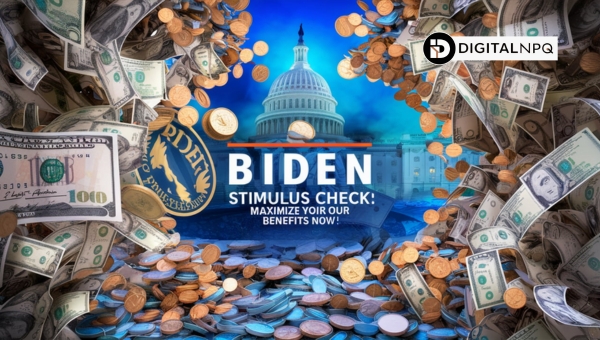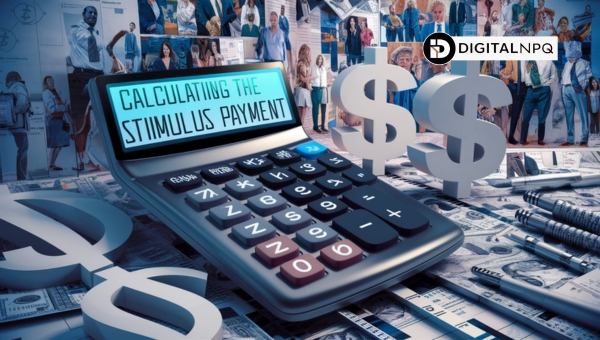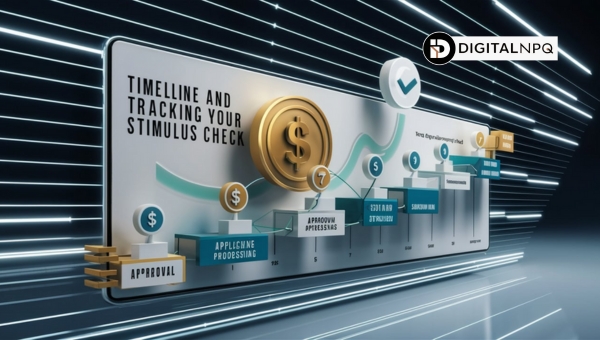Biden Stimulus Check: Maximize Your Benefits Now!

The Biden Stimulus Check, part of the American Rescue Plan, offers crucial financial relief during the COVID-19 pandemic. In this article, we’ll delve into how these direct payments work, the eligibility criteria, and how to calculate your stimulus amount.
We’ll also explore the timeline for receiving your check, its impact on American households, and compare it to previous stimulus packages. By understanding these details, you can maximize the benefits you’re entitled to. Let’s dive in and unlock the full potential of the Biden Stimulus Check.
How the Biden Stimulus Check Works?
The Biden Stimulus Check, part of the American Rescue Plan Act of 2021, is designed to provide financial relief during the COVID-19 pandemic. This relief comes through direct financial payments and extended unemployment benefits.

Direct Financial Payments
- Individuals: Eligible individuals can receive up to $1,400.
- Married Couples: Married couples filing jointly can receive up to $2,800.
- Dependents: Each dependent qualifies for an additional $1,400.
Extended Unemployment Benefits
- Additional Support: Unemployment benefits were extended to help those who lost their jobs due to the pandemic.
- Weekly Payments: The extension includes an additional $300 per week on top of existing unemployment benefits.
- Duration: These benefits were extended through September 2021 to provide ongoing support.
Eligibility Criteria for the Stimulus Check
To determine eligibility for the stimulus check, various criteria are considered. Here are the specifics:
- Single Filers:
- Full payment for adjusted gross income (AGI) under $75,000.
- Reduced payment for AGI between $75,000 and $80,000.
- No payment for AGI over $80,000.
- Heads of Household:
- Full payment for AGI under $112,500.
- Reduced payment for AGI between $112,500 and $120,000.
- No payment for AGI over $120,000.
- Joint Filers:
- Full payment for AGI under $150,000.
- Reduced payment for AGI between $150,000 and $160,000.
- No payment for AGI over $160,000.
- Dependents:
- Must be listed on the tax return to qualify for the additional $1,400.
- Mixed-Status Families:
- Families with one member having a Social Security number may still qualify.
This stimulus package aims to provide comprehensive support to a wide range of individuals and families, ensuring financial stability during challenging times.
Also Read: IRS Stimulus Check Updates 2024: What You Should Know
Calculating the Stimulus Payment
Understanding how your stimulus payment is calculated can help you anticipate the amount you might receive. The calculation involves several factors including your adjusted gross income (AGI) and tax return details. Let’s dive deeper into these aspects to see how they influence your payment.

Payment Breakdown
The amount you receive from the Biden stimulus check is determined primarily by your income and filing status. Here is a simple breakdown:
- Single Filers: Those with an AGI under $75,000 receive the full $1,400. The payment decreases for incomes between $75,000 and $80,000.
- Married Couples Filing Jointly: Couples with an AGI under $150,000 receive $2,800. The payment decreases for incomes between $150,000 and $160,000.
- Heads of Household: Those with an AGI under $112,500 receive the full $1,400. The payment decreases for incomes between $112,500 and $120,000.
- Dependents: Each dependent, regardless of age, qualifies for an additional $1,400.
Tax Return Considerations
Your most recent tax return plays a crucial role in determining your stimulus payment:
- Based on 2019 or 2020 Returns: The IRS uses the most recent return on file to calculate your payment. If your 2020 return shows a lower income than 2019, it may result in a higher payment.
- Changes in Dependents: If you had a child or gained a dependent in 2020, make sure to file your 2020 return to get the additional $1,400 per dependent.
- Income Variations: If your income decreased in 2020 compared to 2019, filing your 2020 return promptly could ensure you receive a larger payment.
- Non-Filers: If you didn’t file taxes in 2019 or 2020, you may need to provide your information through the IRS’s non-filers tool to receive your payment.
Understanding these elements can help you ensure you’re getting the optimal amount from your stimulus check.
Timeline and Tracking Your Stimulus Check
Receiving your Biden stimulus check involves a few key steps and timelines. Understanding these timelines and knowing how to track your payment can make the process smoother and less stressful. Let’s dive into the details.

Expected Timelines for Receiving Stimulus Checks
- Initial Distribution: The IRS began distributing the Biden stimulus checks in March 2021. For many people, the fastest method of receiving the payment was through direct deposit into their bank accounts.
- Paper Checks and Debit Cards: If the IRS did not have your direct deposit information, you would receive a paper check or a prepaid debit card. Paper checks generally took a few weeks longer to arrive compared to direct deposits, while debit cards could take even longer.
- Subsequent Payments: After the initial distribution, the IRS continued to send out payments in batches. This means that if you did not receive your payment in the first wave, there was still a chance to get it in later batches.
- Tax Return Adjustments: If your 2020 tax return showed a different income level compared to your 2019 return, your eligibility and payment amount could change. This adjustment could delay your stimulus payment until after you file your 2020 taxes.
Methods to Track the Status of Your Stimulus Check
The IRS provided several tools and methods to help you track your stimulus payment:
- Get My Payment Tool: The IRS’s online Get My Payment tool is the most efficient way to track your stimulus check. By entering your Social Security number, date of birth, and address, you could see the status of your payment, including the method and expected date of delivery.
- IRS Notifications: The IRS sent out letters (Notice 1444) to your last known address within 15 days after your payment was issued. This letter detailed the amount of the payment, the method of delivery, and how to report any issues.
- Bank Account Monitoring: If you were expecting a direct deposit, regularly checking your bank account was a good way to see if the payment had arrived. Many banks also sent notifications when the deposit was made.
- USPS Informed Delivery: For those receiving paper checks or debit cards, signing up for USPS Informed Delivery allowed you to see images of your mail before it arrived. This was particularly useful to know when to expect your check or card.
- IRS Helpline: If you experienced issues or had specific questions about your stimulus payment, contacting the IRS helpline provided direct support. However, high call volumes often meant longer wait times.
- Tax Professional Assistance: Working with a tax professional could also help you understand and track your stimulus payment, especially if your situation was complex.
By knowing when to expect your payment and how to track it, you can stay informed and prepared. This ensures that you receive your stimulus check as smoothly as possible.
Also Read: $145M Kia Theft Lawsuit: How to Join and Claim Your Share?
Impact of the Stimulus Check on Americans
The Biden stimulus check has had a significant impact on Americans, affecting spending behaviors and providing much-needed economic relief. By examining how people are using these funds and the sectors benefiting the most, we can understand the broader implications of this financial support.
Spending Patterns
Understanding how Americans have used their stimulus checks helps paint a clearer picture of its economic impact. Here are some key spending patterns:
- Essential Expenses: A large portion of recipients spent their checks on essential needs like rent, utilities, and groceries.
- Debt Repayment: Many used the funds to pay off debts, including credit card balances and personal loans.
- Savings and Investments: Some individuals chose to save their checks or invest in stocks and retirement funds.
- Discretionary Spending: As the economy began to reopen, others spent on non-essential items such as electronics, dining out, and vacations.
Economic Relief Provided
The stimulus checks have provided critical relief across various sectors, helping stabilize the economy and support recovery efforts. Here are some areas that significantly benefited:
- Retail: Increased consumer spending boosted sales in clothing, electronics, and home goods.
- Food Services: Restaurants and food delivery services saw higher demand as people spent part of their checks on dining out.
- Housing: The additional funds helped many avoid eviction or foreclosure by paying rent or mortgage.
- Healthcare: Some recipients used their checks to cover medical expenses, including prescription medications and healthcare services.
- Transportation: Spending also increased in the automotive sector, with people investing in car repairs and new vehicles.
Comparing to Previous Stimulus Packages
When examining the Biden stimulus check, it’s useful to compare it with previous stimulus packages. Understanding the differences between the CARES Act and the American Rescue Plan can provide insight into how these relief efforts evolved to better support Americans during the pandemic.
CARES Act vs American Rescue Plan
The CARES Act and the American Rescue Plan are both crucial in providing financial relief, yet they differ in several key aspects:
- Payment Amounts:
- CARES Act: Provided $1,200 per eligible individual and $500 per dependent.
- American Rescue Plan: Increased payments to $1,400 per individual and dependent.
- Eligibility:
- CARES Act: Had income limits of $75,000 for single filers and $150,000 for joint filers, with a phase-out range.
- American Rescue Plan: Maintained similar income limits but included all dependents, regardless of age.
- Scope:
- CARES Act: Focused on immediate relief with provisions for businesses, unemployment benefits, and direct payments.
- American Rescue Plan: Expanded to include more comprehensive support, such as extended child tax credits and additional funds for healthcare and vaccinations.
- Unemployment Benefits:
- CARES Act: Offered an additional $600 per week in unemployment benefits.
- American Rescue Plan: Continued support with an additional $300 per week.
By comparing these two packages, it’s clear that the American Rescue Plan aimed to provide more extensive relief to a broader range of recipients, reflecting ongoing economic challenges and needs.
FAQs
Can I still get my stimulus checks if I never got them?
Yes, if you never received your stimulus checks, you can claim them as a Recovery Rebate Credit when you file your tax return. This allows you to receive the payment you missed.
Which states are giving out stimulus checks?
Several states have initiated their own stimulus programs. States like California, New Mexico, and Colorado have provided additional financial support. Check your state government’s website for specific details.
Who is eligible for a 2024 stimulus check?
Eligibility for a 2024 stimulus check will depend on the specific guidelines set by future legislation. Generally, eligibility criteria include income limits and dependent status. Keep an eye on official announcements for updates.
Conclusion
The Biden Stimulus Check has provided crucial financial support to many Americans during the challenging times brought on by the COVID-19 pandemic. By understanding how these checks work, who is eligible, and how payments are calculated, individuals can better navigate their financial situations.
The impact of these checks has been significant, offering relief to households and boosting various sectors of the economy. Comparing this plan to previous stimulus packages highlights its broader scope and generous benefits.
If you found this information helpful, be sure to explore more insightful articles on our site to stay informed and empowered!
